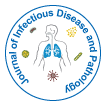How Technology is Revolutionizing Keratitis Diagnosis
Received Date: Jun 25, 2024 / Accepted Date: Aug 24, 2024 / Published Date: Aug 26, 2024
Abstract
The diagnosis of keratitis, a potentially sight-threatening inflammation of the cornea, has historically relied on clinical examination and basic microbiological techniques. However, advancements in technology are revolutionizing the accuracy, speed, and comprehensiveness of keratitis diagnosis, significantly enhancing patient outcomes. This review examines the impact of modern diagnostic tools, including in vivo confocal microscopy, optical coherence tomography (OCT), and next-generation sequencing (NGS), on the identification and characterization of keratitis. In vivo confocal microscopy allows for real-time visualization of corneal structures at the cellular level, aiding in the early detection of infectious agents. OCT provides high-resolution cross-sectional images of the cornea, enabling precise assessment of the extent and depth of corneal involvement. Meanwhile, NGS has transformed the microbiological diagnosis of keratitis, allowing for the rapid and accurate identification of pathogens, including rare and atypical organisms that may elude conventional culture methods. Additionally, artificial intelligence (AI) and machine learning algorithms are being integrated into diagnostic platforms, offering enhanced diagnostic accuracy and personalized treatment recommendations. These technological innovations are not only improving diagnostic precision but are also paving the way for more targeted and effective treatments. As technology continues to evolve, it is poised to play an increasingly critical role in the early and accurate diagnosis of keratitis, ultimately leading to better clinical outcomes and preservation of vision.
Citation: Qingyong G (2024) How Technology is Revolutionizing KeratitisDiagnosis. J Infect Pathol, 7: 246.
Copyright: © 2024 Qingyong G. This is an open-access article distributed underthe terms of the Creative Commons Attribution License, which permits unrestricteduse, distribution, and reproduction in any medium, provided the original author andsource are credited.
Share This Article
Recommended Journals
Open Access Journals
Article Usage
- Total views: 376
- [From(publication date): 0-2024 - Mar 29, 2025]
- Breakdown by view type
- HTML page views: 208
- PDF downloads: 168
